Rank Generalmajor Books The service | Name Reinhard Gehlen | |
 | ||
Awards Deutsches Kreuz in silver during the Second World WarGroses Bundesverdienstkreuz am Schulterbandin 1968Knight of Malta | ||
Battles/wars World War IICold War Similar Heinz Felfe, Gerhard Wessel, Hans Globke Died 8 June 1979 (aged 77) Starnberg, West Germany | ||
Reinhard gehlen the cia the nazis
Reinhard Gehlen (3 April 1902 – 8 June 1979) was a German general who was chief of the Wehrmacht Foreign Armies East (FHO) military-intelligence unit, during World War II (1942–45); spymaster of the anti–Communist Gehlen Organization for the United States (1946–56); and the first president (1956–68) of the Federal Intelligence Service (Bundesnachrichtendienst, BND) of West Germany, during the Cold War.
Contents
- Reinhard gehlen the cia the nazis
- Reinhard gehlen the cia and the nazis conspiracy documentary
- Early life and military service
- After the Second World War
- Gehlen Organization
- BND Federal Intelligence Service
- Honours
- Literature
- References
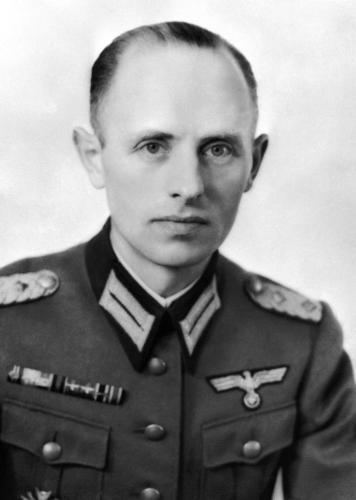
Gehlen became a professional soldier in 1920 during the Weimar Republic. In 1942, Gehlen became chief of FHO, the German Army's military intelligence unit on the Eastern Front (1941–45). During the second world war he achieved the rank of major general, before Hitler sacked him, because of the FHO’s pessimistically accurate intelligence reports about Red Army superiority. In late 1945, at the start of the Cold War, the U.S. military (G-2 Intelligence) recruited General Gehlen to establish an espionage network against the Soviet Union; the Gehlen Organization (1946), wherein he employed ex–military-officers of the Wehrmacht and Nazis from the Schutzstaffel (SS) and the Sicherheitsdienst (SD).
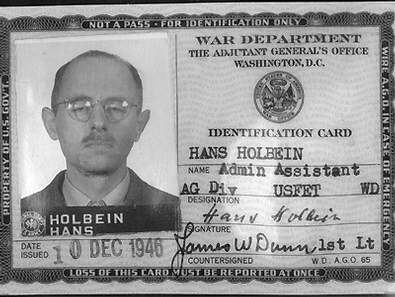
Gehlen was the first president of the Federal Intelligence Service of West Germany from 1956 to 1968. While the office of president of the BND was a civilian office, he was also a lieutenant-general in the Reserve forces of the Bundeswehr; thus, Reinhard Gehlen was the highest-ranking reserve-officer in the military of West Germany.

Reinhard gehlen the cia and the nazis conspiracy documentary
Early life and military service
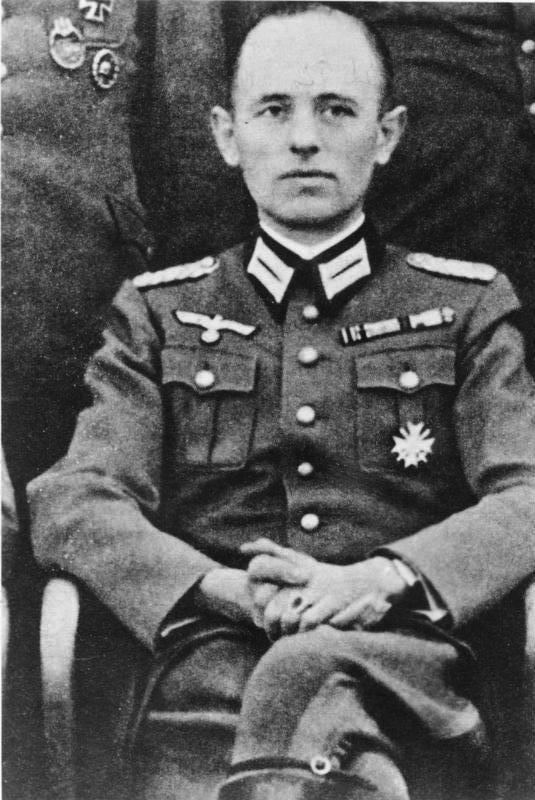
Gehlen was born to a Roman Catholic family; his father was a book-seller in Erfurt. In 1920, Reinhard joined the Reichswehr; then attended the German Staff College, and was graduated in 1935, after which he was promoted to captain and assigned to the German General Staff.

From 1935 to 1936, Captain Gehlen served in the General Staff, and was promoted to major in 1939; at the time of the German attack on Poland (1 September 1939) he was a staff officer in an infantry division. In 1940, Gehlen became liaison officer to Field Marshal Walther von Brauchitsch, Army Commander-in-Chief; and later was transferred to the staff of General Franz Halder, the Chief of the German General Staff. In July 1941, Major Gehlen was promoted to the rank of lieutenant-colonel, sent to the Eastern Front, and assigned, as senior intelligence-officer, to the Fremde Heere Ost (FHO, Foreign Armies East) section of the Staff.
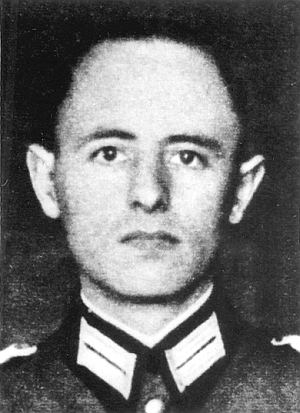
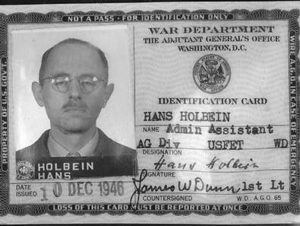
In spring of 1942, Gehlen assumed command of the FHO from Colonel Eberhard Kinzel. Before the Wehrmacht disasters in the Battle of Stalingrad (23 August 1942 – 2 February 1943), a year into the German war against Soviet Russia, the professional soldier Gehlen understood that the FHO required fundamental re-organisation, and secured the professionally suitable staff of army linguists and geographers, anthropologists, lawyers, and junior military officers who would raise the intellectual level of the FHO as a military-intelligence organisation, unhindered by the Nazi ideology of Slavic inferiority.
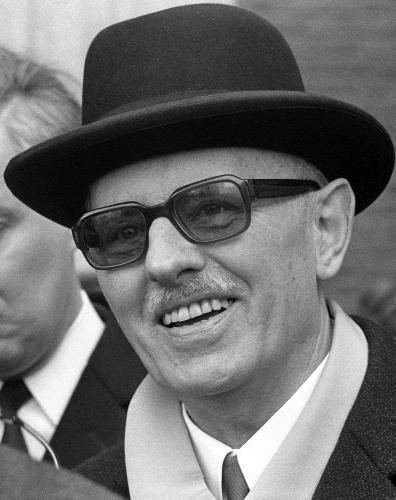
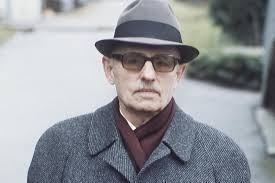
In summer 1942, Colonel Henning von Tresckow, Colonel Claus von Stauffenberg, and General Adolf Heusinger asked Colonel Gehlen to participate in their assassination of Adolf Hitler. As head of the FHO, Col. Gehlen allowed the military conspirators to plot against Hitler's Nazi government, under his protection; moreover, at Berchtesgaden, he was present in their discussions for the assassination of Hitler; yet, after the failed bomb plot of 20 July 1944, Col. Reinhard Gehlen escaped inclusion to Hitler's revenge upon the military conspirators.
Gehlen's cadre of FHO intelligence-officers produced faithful, true, and accurate field-intelligence about the Red Army that contradicted rear-echelon perceptions of the Eastern battle front, which Hitler dismissed as defeatism, philosophically harmful to the Nazi cause against “Judeo-Bolshevism” in Russia. In April 1945, despite his professionalism and the accurate military intelligence, Hitler dismissed the FHO spymaster Gehlen, soon after his promotion to major general. In the event, the FHO collection of intelligence (military and political), from captured soldiers of the Red Army, assured General Gehlen's post–WWII survival as a Western anti–Communist spymaster with networks of spies and secret agents in the countries of Soviet-occupied Europe.
During the German war against Soviet Russia (1941–45), Gen. Gehlen's FHO collected much tactical military-intelligence about the Red Army, and much strategic, political-intelligence about Stalin's Russia. Understanding that the USSR would defeat and occupy the Third Reich (1933–45), the spymaster Reinhard Gehlen acted to survive the war, and ordered the FHO intelligence files copied to microfilm; the FHO files proper were stored in water-tight drums, and buried throughout the Austrian Alps. In the event, the files secured in the mountains of Upper Bavaria, Gen. Gehlen controlled fifty cases of Nazi intelligence about the USSR, for sale to the Western intelligence services.
In 1946, when the USSR consolidated soviet hegemony upon their agreed-upon (Potsdam Conference, 1945) sphere of influence in east Germany, and Europe (central, eastern, south-eastern), which they demarcated with the Iron Curtain, the Western Allies of World War II, the U.S., Britain, France, had no spies (military, political, economic) within the countries from which the occupying Red Army had vanquished the Wehrmacht. As planned, upon surrendering specifically to the U.S. Army, Wehrmacht Major-General Reinhard Gehlen offered himself, and his FHO staff, as an anti-Communist intelligence agency in the cold war between the West and the USSR; known later as the Gehlen Organization.
After the Second World War
On 22 May 1945, General Reinhard Gehlen surrendered to the Counter Intelligence Corps (CIC) of the U.S. Army, in Bavaria, and was taken to Camp King, near Oberursel, and there interrogated by Captain John R. Boker. As a spymaster with great knowledge of Soviet forces, and anti-communist intelligence contacts in the USSR, the American Army recognized the political value of the General Gehlen. In exchange for his liberty and the liberty of his command (prisoners of the U.S. Army), Gehlen offered the Counter Intelligence Corps access to the FHO’s intelligence archives, and to his anti-communist espionage network in the Soviet Union. In the event, Capt. Boker deleted the names of Gehlen, and his Wehrmacht command, from the official lists of Nazi prisoners of war, and transferred seven FHO senior-officers to join Gehlen.
The FHO archives in the control of Gehlen were unearthed and secretly taken to Camp King, ostensibly without the knowledge of the camp commander. By end of summer 1945, Capt. Boker had the support of Brigadier General Edwin Sibert, the G2 (senior intelligence officer) of the U.S. Twelfth Army Group. Gen. Sibert arranged the secret transport of the Gehlen Nazis and the FHO intelligence archives, authorized by his superiors in the chain of command, Gen. Walter Bedell Smith (chief of staff for Gen. Eisenhower), who worked with William Donovan (former OSS-chief) and Allen Dulles (OSS chief), who also was the OSS station-chief in Bern. On 20 September 1945, General Reinhard Gehlen and three associates were flown from the American Zone of Occupation in Germany to the U.S., to become spies for the U.S. Government.
In July 1946, the U.S. officially released the military prisoner Gehlen and returned him to Occupied Germany. On 6 December 1946, Gehlen began espionage operations against the Soviet Union, by establishing a secret intelligence service composed of ex–intelligence-officers of the Wehrmacht and Nazis from the SS (Schutzstaffel) and the SD (Sicherheitsdienst), first at Oberursel, near Frankfurt, then at Pullach, near Munich. The cover-name of the Gehlen Organization was the South German Industrial Development Organization. For the staff of his spy agency, Gehlen selected 350 ex-intelligence officers of the Wehrmacht as members, eventually, the organization comprised some 4,000 anti-communist secret agents; yet, to U.S. intelligence, they were the called the Gehlen Organization and the Org.
Gehlen Organization
From the beginning of his association with the U.S. Government, Gen. Reinhard Gehlen always had been under military sponsorship, controlled by US Army G-2 (Intelligence), which he resented; eventually, the general realized a formal association with, and sponsorship by the Central Intelligence Agency (CIA), established in 1947, a year after the Gehlen Organization was established. The CIA kept close control of the Gehlen Organization, because, for years, during the Cold War (1945–91), the Org agents were CIA’s only eyes-and-ears on the ground in the countries of the Eastern Bloc of Soviet hegemony.
Between 1947 and 1955, the Org agents interviewed every German PoW who returned to West Germany from captivity in the Soviet Union. The Gehlen Org employed hundreds of ex–Nazis, and also had close contacts with the anti-communist organizations of the East European émigré communities in Western Europe. The espionage of the Gehlen Organization comprehended observing the operations of the railroad systems, airfields, and ports of the USSR, and the infiltration (by sea, air, and land) of Org secret agents to the Baltic countries, and to the Ukraine. Among the successes of the Gehlen Org is Operation Bohemia, a major effort of anti-communist counter-espionage.
The security and efficacy of the Gehlen Organization were compromised by East German moles within the Org, and by Communists and their sympathizers within the CIA and the SIS (MI6), especially Kim Philby, himself a Soviet secret agent. As the spies emerged from the shadows, Gehlen, personally, and the Gehlen Organization, officially, were attacked by the governments of the Western powers and the Soviet Union. The British government was especially hostile towards the spymaster Gehlen, and the politically liberal British press ensured full publication of the existence of the Gehlen Organization, Nazis in the employ of Western intelligence agencies.
BND (Federal Intelligence Service)
Eleven years after the end of World War II, on 1 April 1956, the U.S. Government and the CIA formally transferred the Gehlen Organization to the authority of West Germany (Federal Republic of Germany, BRD), under Chancellor Konrad Adenauer (1949–63). By way of that transference of geopolitical sponsorship, the anti–Communist Gehlen Organization became the nucleus of the Bundesnachrichtendienst (BND, Federal Intelligence Service).
As the spymaster of the Gehlen Organization, Reinhard Gehlen became president of the BND as an espionage service, wherein he experienced operational success and failure, until he was forced out of office in 1968. The end of Gehlen’s career as a spymaster resulted from a conflation of events in West Germany; (i) the discovery of the professional secret agent Heinz Felfe (ex–SS lieutenant and a Soviet-agent) working in the Pullach headquarters of the BND; (ii) political estrangement from his boss, Chancellor Adenauer, occurred in 1963, aggravated every problem; (iii) and the inefficiency of the BND — consequent to Gehlen’s poor leadership and continual inattention to the business of espionage-as-national-defence.
In 1968, Reinhard Gehlen retired as a civil servant of West Germany, classified as a Ministerialdirektor, a senior civil-service grade of generous pension; after eleven years of retirement, Gehlen died in 1979, at the age of 77 years.
